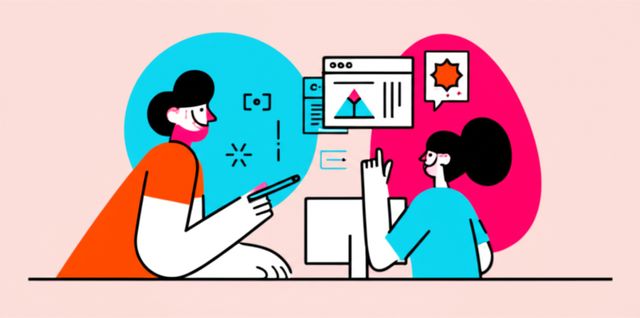Creative Technologist
A Creative Technologist is a creative professional who specializes in designing and developing digital products and experiences. These professionals combine technical skills with design principles to create innovative interactive media and immersive experiences. They work in a variety of industries, including entertainment, media, healthcare, education, and retail. Those in this field, whether self-taught or formally educated, often continue to develop their skills through online courses to stay up-to-date with the latest technologies and trends.
Tasks and Responsibilities
The responsibilities of a Creative Technologist can vary depending on the industry and the specific role, but some common tasks include:
- Designing and prototyping digital products and experiences
- Developing and maintaining websites, mobile apps, and other digital platforms
- Creating immersive experiences using virtual reality, augmented reality, or mixed reality
- Working with engineers and designers to bring creative ideas to life
- Staying up-to-date with the latest technologies and trends
Skills and Qualifications
Creative Technologists need a strong foundation in both technical and design skills. Some of the most important skills for this role include:
- Proficiency in programming languages and software development tools
- Understanding of design principles and user experience
- Strong creativity and problem-solving skills
- Ability to work independently and as part of a team
- Excellent communication and presentation skills
Creative Technologists typically have a bachelor's degree in computer science, design, or a related field. However, some professionals in this field may also have a background in the arts or humanities. Those with experience in the arts, for example, may bring unique perspectives to their work in design and user experience.
Career Path
There are many different paths to a career as a Creative Technologist. Some professionals start out as web developers or designers, while others may come from a background in engineering or the arts. With the right skills and experience, it is possible to transition into a Creative Technologist role from a variety of different fields.
Career Prospects
The job outlook for Creative Technologists is expected to be strong in the coming years. The increasing demand for digital products and experiences is driving the need for professionals who can design and develop these solutions. Creative Technologists with the right skills and experience can find opportunities in a variety of industries.
Personal Qualities
Successful Creative Technologists are typically creative, curious, and passionate about technology. They are also good problem-solvers and have a strong work ethic. Those in this role should be able to work independently and as part of a team, and they should be able to communicate their ideas effectively.
Projects
Creative Technologists often work on a variety of projects, including:
- Designing and developing websites
- Creating mobile apps
- Developing immersive experiences using virtual reality, augmented reality, or mixed reality
- Working on interactive installations
- Creating digital content for marketing and advertising campaigns
Growth Opportunities
Creative Technologists have the opportunity to advance their careers in a variety of ways. Some may choose to specialize in a particular area, such as UX design or front-end development. Others may move into management roles, or they may start their own businesses.
Transferable Skills
The skills that Creative Technologists develop can be transferred to a variety of other careers. For example, those with experience in programming and software development may be able to transition into roles as software engineers or web developers. Those with experience in design may be able to transition into roles as UX designers or graphic designers. Creative Technologists may also be able to use their skills to start their own businesses.
Online Courses
Online courses can be a great way to learn the skills needed for a career as a Creative Technologist.
Online courses in web design, programming, and UX design can teach you the fundamentals of these disciplines. You can also find online courses in specialized topics, such as virtual reality development or augmented reality development. Online courses can be a more flexible and affordable alternative to traditional education, and they can be a great way to get started in a new career or to advance your current skills.
Whether online courses alone are enough to follow a path to this career depends on your individual circumstances and goals. If you already have a strong foundation in technical and design skills, you may be able to find a job as a Creative Technologist with just an online education. However, if you are new to these fields, you may want to consider supplementing your online learning with hands-on experience through internships or freelance work.


